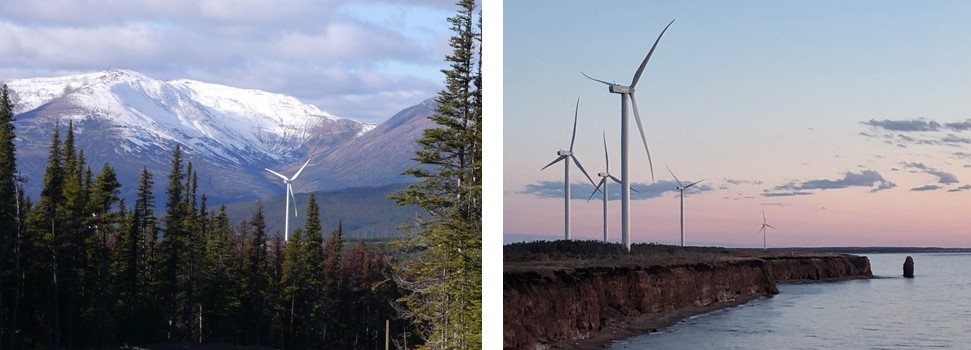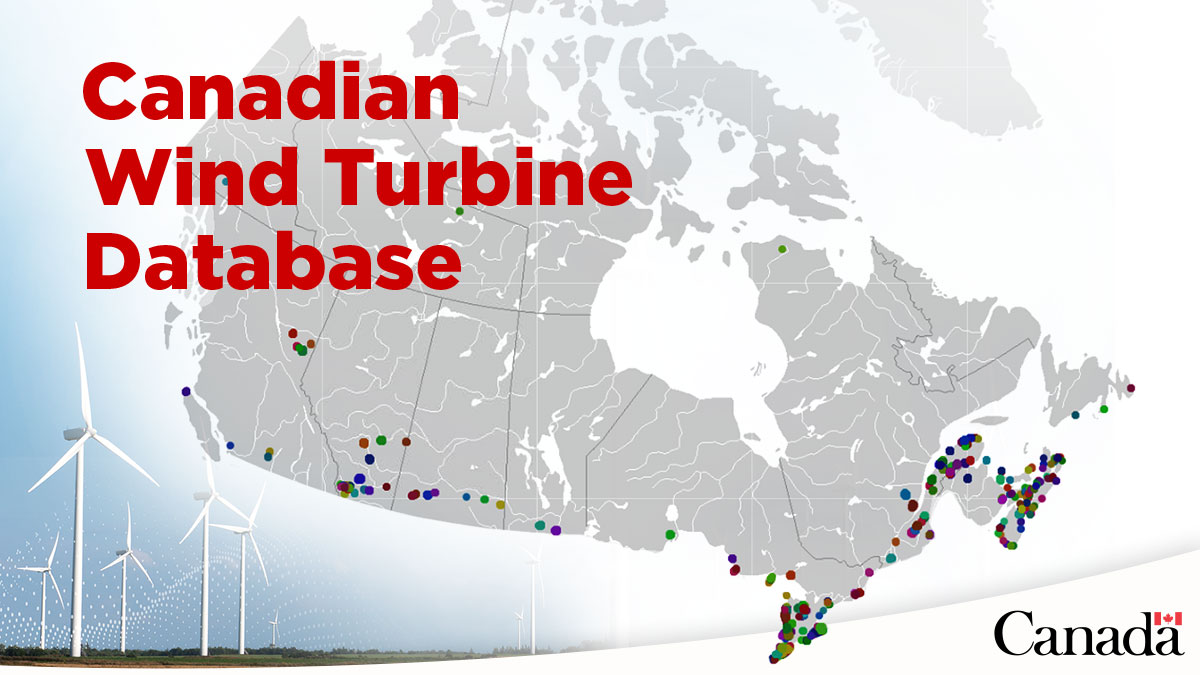Canada's New Wind Turbine Database
Canada has just released a wind energy database that will improve access to centralized, credible and publicly available energy data in Canada. The Canadian Wind Turbine Database (CWTDB) contains the locations of Canada's approximately 6,500 wind turbines, including key data for researchers.
The role of data in clean energy technology advancement

|
Figure 1: Wind turbines on Canada's west (left) and east (right) coasts. The Canadian Wind Turbine Database provides data on commercial wind turbines in Canada from coast to coast. |
Data is the currency of the digital age. While this may sound like a cliché, the fact is that high quality and reliable data is universally valued in the 21st century. Renewable energy, including wind, is a key pillar in Canada's transition to low-carbon energy systems and meeting its greenhouse gas reduction targets. More research is needed, however, to fuel the innovation necessary to achieve these goals. This may come in the form of developing new energy generation and storage technologies, deploying existing technologies and integrating them into power systems, or determining how to minimize negative ecological impacts. Underpinning all of this research and development is accurate, granular, and accessible data.
Open-access data is invaluable to the research community - it enables transparency and repeatability, and leads to improved credibility and relevance of research findings. For example, grid integration studies such as the Pan-Canadian Wind Integration Study (PCWIS) and North American Renewable Integration Study (NARIS), rely on granular electricity data. When studies of this magnitude (involving large-scale models of electricity systems) significant effort and cost is devoted to building synthetic high-frequency datasets that serve as a proxy in the absence of actual load and generator production data. This prodigious effort could be minimized - or even avoided - through comprehensive and publicly available national electricity datasets.
Adding to Canada's energy data landscape
The Government of Canada's Directive on Open Government seeks to ensure that open data and open information is released in accessible and reusable formats. Canada has a long and distinguished history of making data accessible for its citizens, whether through Statistics Canada, the Canada Energy Regulator (formerly the National Energy Board), or the expansive Open Maps platform. More recently, the Government of Canada has launched the Canadian Centre for Energy Information (CCEI), which aims to provide "a convenient one-stop virtual shop for independent and trusted information on energy in Canada." The CCEI provides insight into "all things energy-related, including production, consumption, international trade and much more." The new Canadian Wind Turbine Database continues Canada's longstanding tradition of sharing information for the greater good.
A single, national-scale wind energy location dataset
In June 2020, Natural Resources Canada, together with the University of Alberta, released the CWTDB. This extensive database can be found on the Government of Canada's Open Government portal, and provides static information on individual wind turbine generators across the country. The CWTDB is the first comprehensive open-access database for wind turbines across Canada, and follows similar efforts by other jurisdictions, including the United States, which released the U.S. Wind Turbine Database in 2018.

|
Figure 2: The new CWTDB includes an interactive map of over 6,500 wind turbines and data such as coordinates, capacity, model, manufacturer, hub height, rotor diameter, and commissioning date. |
 The CWTDB is the result of a collaborative effort between CanmetENERGY Ottawa and the University of Alberta's Centre for Applied Business Research in Energy and the Environment (CABREE).
The CWTDB is the result of a collaborative effort between CanmetENERGY Ottawa and the University of Alberta's Centre for Applied Business Research in Energy and the Environment (CABREE).
Key features of the new CWTDB include an interactive map of more than 6,500 individual wind turbines in Canada. The map lists their coordinates as well as key specifications including capacity, model, manufacturer, hub height, rotor diameter, and commissioning date. The database will continue to expand as it's updated at least annually to reflect the construction of new wind farms.
Centralizing information on individual wind turbines allows users to do research and modeling from an energy, environmental or economic perspective. The database can support R&D in sectors including natural resources, agriculture, and health. It is an example of CanmetENERGY Ottawa's ongoing efforts to provide information to Canadians on clean energy, help integrate renewable energy into Canada's provincial electrical grids, and address barriers to a wider deployment of renewable energy.
Ryan Kilpatrick is a Research Engineer and Thomas Levy is a Senior Wind Energy Engineer at CanmetENERGY Ottawa. For more information and updates on the Canadian Wind Turbine Database, please contact Natural Resources Canada's CanmetENERGY Ottawa Business Office.
CanmetENERGY | www.nrcan.gc.ca
Author: Ryan Kilpatrick and Thomas Levy
Volume: 2021 January/February








